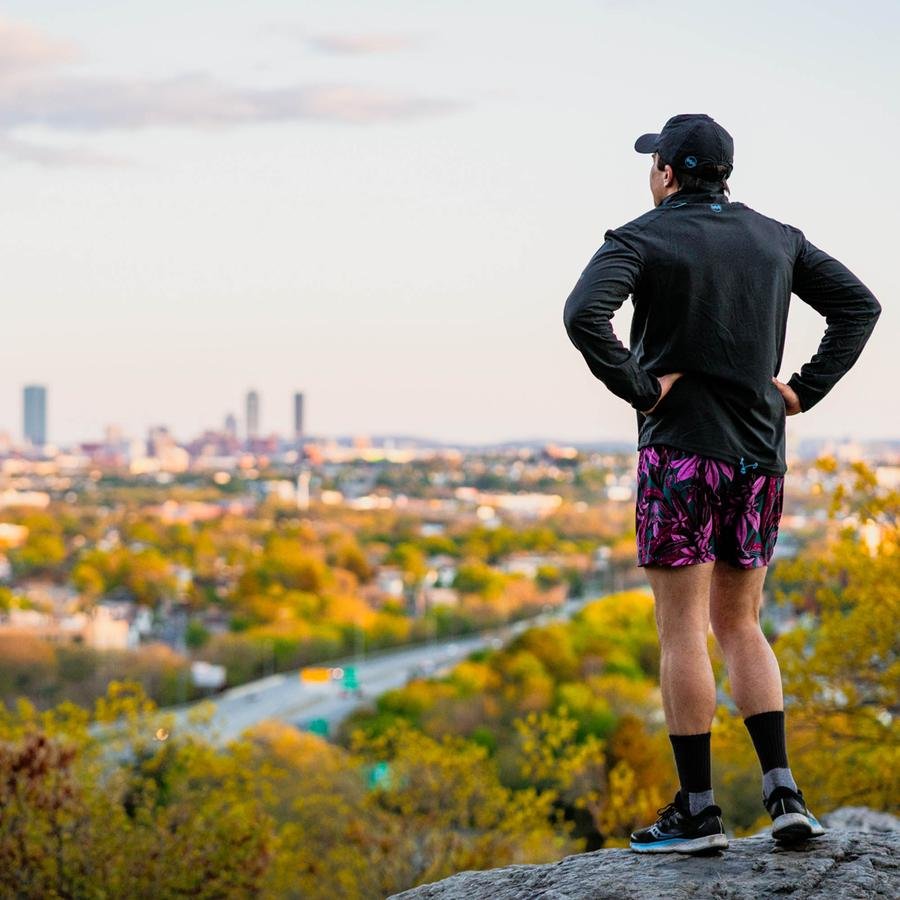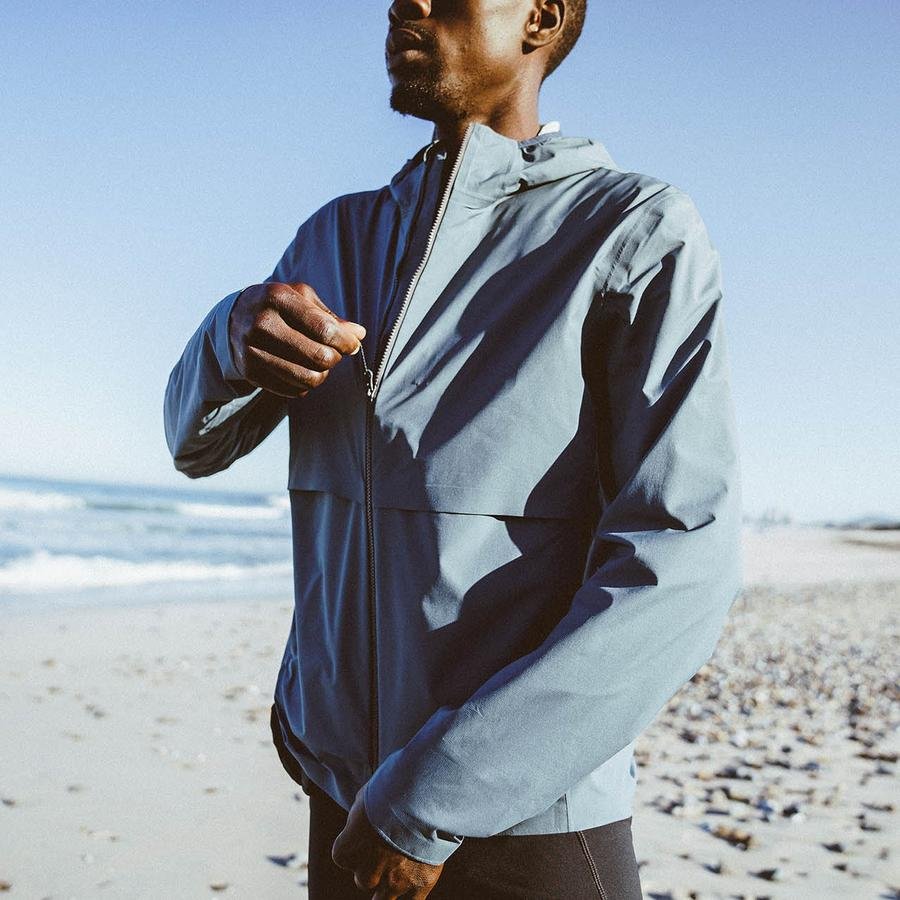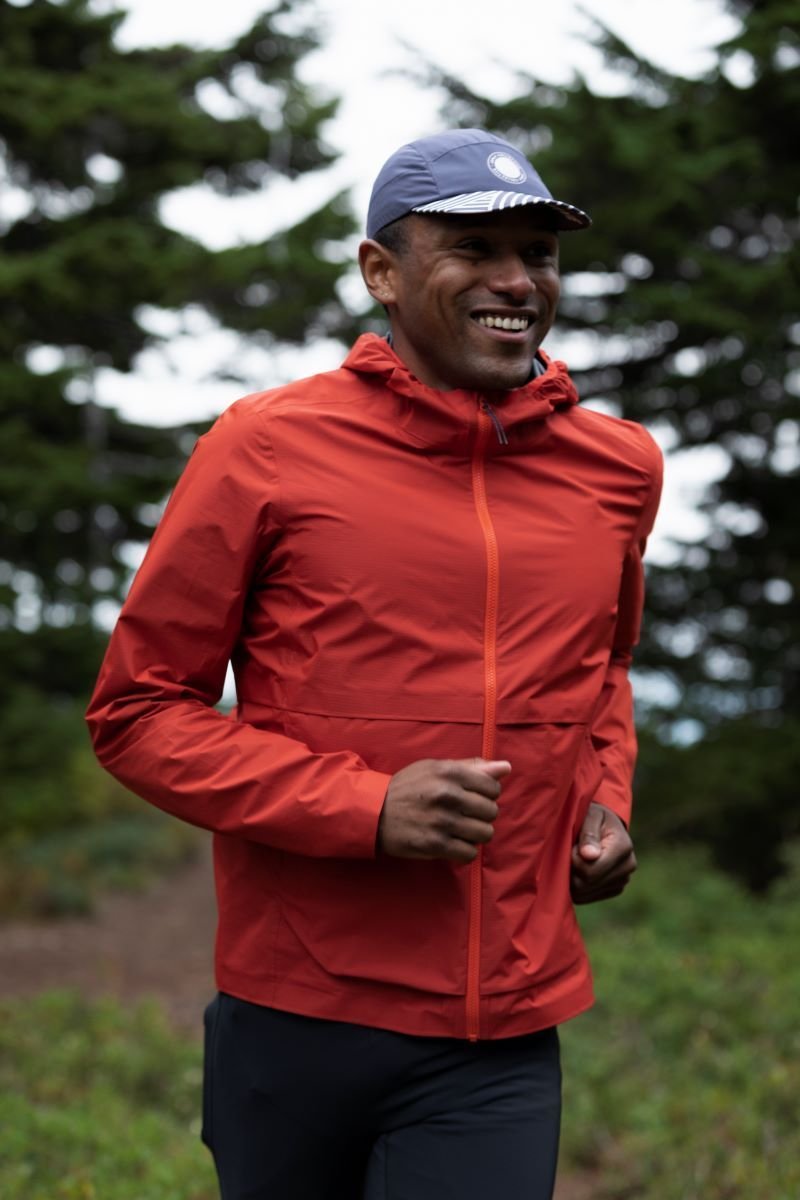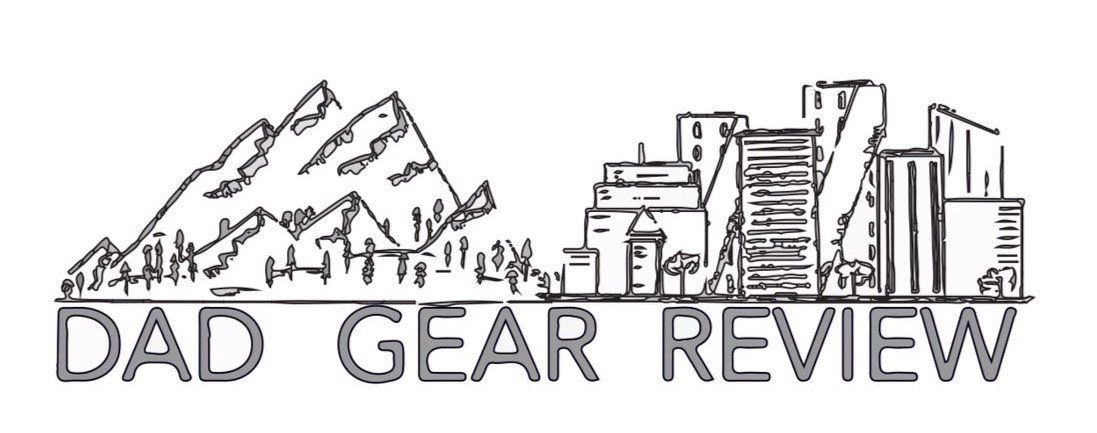
“no one ever regrets going for a run.”
Dave Spandorfer, CEO of Janji
by Steven John
During a recent afternoon, I had the opportunity to chat with Dave Spandorfer, the co-founder and CEO of Janji, a company that makes the best running shorts I own and a jacket so lightweight, flexible, and warm yet breathable that I use it for running, biking, hiking, and for everyday whatnot. (Also, the brand makes a lot of other gear, too.)
Now, normally when I find gear I love I integrate it into the rotation and if it continues to perform well use after use, I consider reviewing it. But I normally don’t take things a step farther and reach out to the company behind the gear, because by creating great stuff, they have already done all I need. But with Janji, as you’ll see, they do a lot more than just create some excellent active wear. They are also doing some excellent work out there in the world.
Which is why Dave and I talked about apparel, sure, but also about water access, sustainability, and why running really is the universal sport.
Steven John: What's your background in sports and the outdoors, and how and when did you decide to parlay these passions into a business?
Dave Spandorfer: We started Janji, actually, on the bus ride to the Division III Track Championship meet going into my senior year in college. The short answer is I was… well, I'll tell you the long answer first. I was a history major. I was an international business major. I had no experience with clothing or in the sporting industry, but when the idea of Janji took hold on that bus ride, it was really something that [my business partner and I] couldn't let go of.
The next steps after that were we applied for a business planning competition that we won at our school and we got an A on a class project to start our own business. Those two things in concert at Washington University in St. Louis all gave us the funding, but also the confidence to get Janji off the ground, and we've been doing it ever since.
It's the only job I've ever had outside of working at a running store, which I did in the early startup period to help get really acquainted with the market and the customer, and really just generally with this fun but also in many ways challenging industry.
SJ: Did you personally grow up always as a runner?
DS: I started running in high school, certainly played sports all my life. Then when I realized I was going to max out at 5'7”, 130, I realized when I was playing football or lacrosse, it just wasn't really going to take hold in the same way that running did. I was just lucky enough to find [running].



SJ: What were the early day of the company like?
DS: Fun, naive, interesting. It was us very much trying to figure out how to start a clothing business after my co-founder was an urban studies major, right? See this level of understanding of where we were at. We were, in those early days, we would literally apply the hang tag to every single item. We would hand pick and ship out every item ourselves. Over time, we realized that it's okay to delegate a few things. We also, frankly, learned to create better product.
The product that we created in the early days, while I still wear the original shorts that we made nine years ago, the product has taken massive, massive leaps forward in every imaginable way. That really comes from hiring people who are a lot smarter, better, certainly more equipped to deal with making great products than I have the capacity, or really the ability, to do.
I still love product. I love touching and feeling clothing, and I definitely still love seeing people wearing Janji gear. That's a feeling that I hope never gets old, but the business has certainly taken a big evolution ever since we brought on the right people to help make it what it is.
SJ: I know there's a name change in the early years – how did you settle on the name Janji for the brand?
DS: Well, Janji means “promise” in Indonesian Malay, and the original name was Edele, which it is, if you're reading it, it's hard to pronounce. Also, the singer Adele was just hitting her stride at the moment. Now today, people will confuse it with Jumanji. We didn't realize they'd be making remakes of the original Robin Williams movie, several sequential ones. But we loved the bounciness of Janji. We loved the originality of the name. No one really confuses it with anyone else, [it’s] super memorable.
Then lastly, we loved the origin. We loved this idea of we're rooted in this promise of making the world a better place through running. It's something that has just been a core guiding principle since we got Janji started on day one and is something that we think about in every decision that we make as a business.
SJ: Why has expanding clean water access always been such a major part of the company's goal and identity?
DS: As I mentioned, the original idea for Janji came on the bus ride to a track meet. In that track meet, it was actually a really fricking hot day. It was the hottest recorded day in Cleveland, of all places, for the month of May. I was running the 10K and the 5K, and during the 10K there were people literally spraying us down with water on both ends of the track. You know intuitively that you need water for running. You need it when you're running in July and you need it when you're running something as long as a marathon. But the reality is it's not easily accessible – potable [water] is not an option for a lot of people. This really was crystallized when, back when I was in college, I would tutor Ethiopian and Eritrean refugees, and many of whom had major access issues growing up with a lack of safe, reliable drinking water.
Tying in this experience when I was in school, and tying in this idea of the necessity of running and water sort of married together to form what is at the crux of our mission. Now that mission, it's evolved over time. I think, as we think about running, we think about the universality of running. Running can be this source, this connective tissue that binds people, whether you live in Boston like we do, or Bangalore, right? You can find people who run. It's something that's amazing about this sport, and water is, of course, also something that is natural, universal, that you need to have – it’s the sustenance of life.
We wanted to make sure that we had this oriented mission that's carried us, basically, since day one. We're doing a bit more around sustainability and access to water and doing things, like in the American Southwest today, where we are working to give running water to communities, frankly, that have never had it before. Which, when we look at the grandness of America and the wealth here, it's unbelievable that's the case.
It has evolved to be [like that]. We'll do something globally, and now we're doing it in many ways more locally and doing more around climate change, water access, indefinite water access, as we grow, change, and continue to see the problem evolve.
SJ: What is the process like for selecting a new piece of apparel that's going to be added for the brand? From idea, to development, to testing, to execution, what's the process you guys think: “We're going to add something new.”
DS: I think the idea is that, is there room in the market for something new, right? I think we want to be able to build something and create something that's not duplicative of what else is out there and really take the own Janji lines. Our mission is to create paths, to allow runners to explore, connect, and create change. If we just do something exactly like what everyone else is doing, then we don't do it. At its core, we look at it differently in that way. We want to say: "All right, here's this. We know there's a big need for a lightweight yet sort of heavier jacket that is easy to travel with and you can wear while you're running, hiking, and seeing the world." So, lo and behold, we create the Thermal Zephyr Jacket.
Now we have a whole product development cycle. We have our head of product. We have a whole testing crew [that] we call our field map team. There are global travelers, runners, adventurers, and then we work with our Janji Collective members to do some more wear testing for sort of those four, five mile runs. If you're in Seattle or Bozeman or Miami, right, we want to make sure we're getting a diversity of testing.
In terms of how we select the countries and the places where we're inspired by, we're looking for three core things. Number one, is there basically a need for what we're doing, right? We're not trying to make the Sweden or Oslo line because there's not exactly a big need there. Number two, can we find some place where that is under-explored or underrepresented? We're not trying to do the same thing, as I mentioned, that everyone else is doing.
Having a line that is inspired by something that's, say, a traditional tourist trap, doesn't necessarily have that same appeal. We want to be able to showcase that the best way to see the world is through running and through inspiring people to visit those places.
Then number three is, can we find a phenomenal group of artists and tell their stories? That could be Christian Gering for our American Southwest line. He's a Santa Fe artist, he's an Indigenous American, and he's also not only a fantastic designer, but he also is a great ultra-runner. He can test the wear, experience the brand.



SJ: Who is the typical Janji customer?
DS: The typical Janji customer, our biggest age groups, are Millennials and Gen Z. It tends to be someone who's a little bit younger, lives in not like the urban core, but sort of a bit more of an artsier, a little bit away from the big financial districts downtown. For instance, in Boston who we really appeal to are people who live in Cambridge, in Somerville, or that version of the Brooklyn of New York that every city pretty much has, that sort of creative class living in a certain area. That's demographic, that's in terms of where they live.
In terms of on the more psychographic scale, these are people who are not using money as a way to run their fastest time. It's 87% of people who buy from Janji, we do customer surveys on this, buy or run for mental wellbeing. I think that's important, right? There are also over 50% of those people use Janji for hiking, 49% for travel. You can see there's a diversity of sort the average people who are using it.
It's not just running the New York City Marathon, running the Boston Marathon. It's about using running really as a way to see the world and both explore themselves through the runs that allow them to have a daily meditation. They tend to be a bit more educated and a bit more positive. It's not necessarily the cynical version of the world, but seeing the world in a bit more of an optimistic lens, even if there are things that we can make better.
SJ: What has the COVID experience been like for you guys these past many months – or years, really?
DS: It, in many ways, is a month-by-month thing. In one sense, we've been able to introduce many new runners to the brand and it's been awesome. It's been fantastic. It's been great just to see people connect with running in a way that they've never done before, and obviously discover Janji, right?
I mean, we think that this idea of using running as a way to explore the world is not just limited to the world. You can do it in your own backyard, too, see these alleyways and different areas. Yeah, the business has done really well. We're extremely happy. We feel very fortunate, especially with so many challenging industries. Like my wife's family is in catering, and it’s not good right now. Or wasn't -- it's getting better.
We've also been majorly hit by the supply chain issues. We've had boats get stuck in the Suez Canal, and then we produce a lot of our product in Vietnam, [which] was shut down for 120 days. Demand's been good, supply's been tough. But I think, in many ways, a lot of people are in our spot. Overall, we feel very fortunate.
SJ: What advice do you have for people want to get into trail running?
DS: To get into trail running, I think the number one thing is understanding that it's a process, right? Being able to commit those Saturday mornings, or after work, before work, to just really get out there. There is something really beautiful about going for a run and experiencing that “outdoorness” and being able to see some place new.
Pushing this idea of not just trying to run the same route every single day, it seems hard in the moment. It seems hard when there's so much other stuff going on, but it can be personally and professionally and just globally [rewarding]. No one ever regrets going for a run and certainly no one regrets going for a trail run. It has this magic rejuvenation ability to it. But the hardest thing, and you have to always remember the hardest thing, is simply getting there. Carving out that time is unbelievably important, and you just have to be able to make that commitment ahead of time to make it happen.
Of course, there’s also getting the right gear; ensuring that you're wearing the right footwear because the worst thing you can do is just to roll your ankles. I'm not just saying to buy the best Janji stuff, which I highly recommend.

